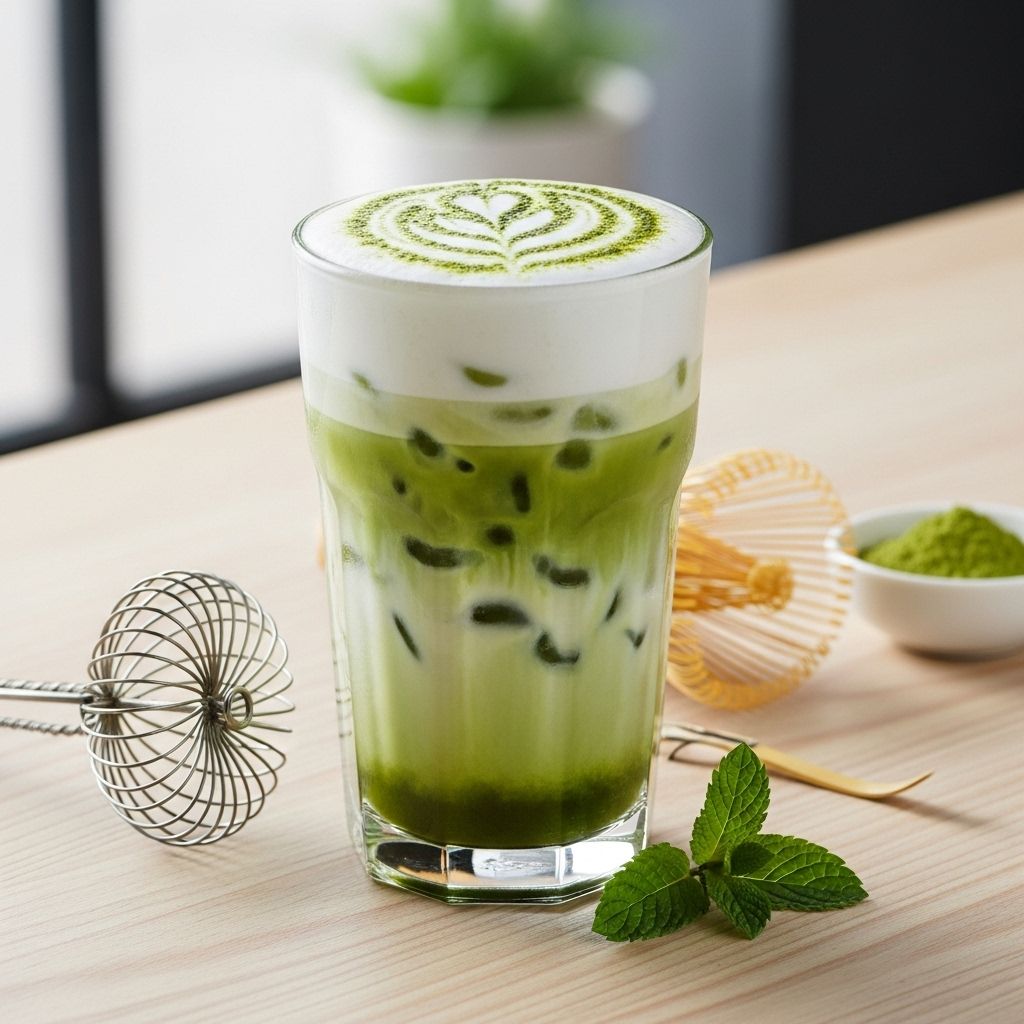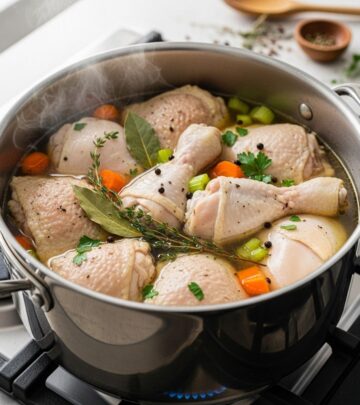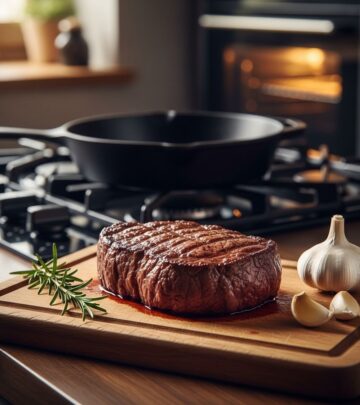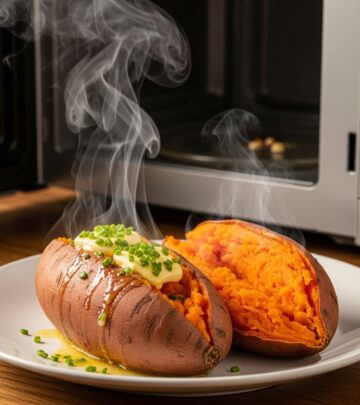How to Make the Perfect Frothy Iced Matcha at Home
Quality matcha and proper whisking unlock a creamy iced drink with café-worthy foam.

Few beverages rival the delicate, refreshing kick of a well-made iced matcha. With its brilliant green hue and gentle, grassy flavor, this Japanese powdered green tea has become a staple in cafés and kitchens worldwide. Yet, many people struggle to reproduce the frothy, creamy versions served at their favorite coffee shops—ending up instead with matcha that’s clumpy, weak, or lacking that signature cloudlike foam.
This comprehensive guide breaks down the secrets to creating a perfectly frothy iced matcha, covering the essentials from choosing high-quality tea and whisking techniques to understanding matcha grades and optimal sweeteners. Whether you’re a matcha novice or a seasoned home barista, these step-by-step instructions, troubleshooting advice, and expert FAQs will empower you to achieve professional results every time.
What Is Matcha?
Matcha is a finely ground powder of specially grown and processed green tea leaves. Traditionally produced in Japan, the process begins with tencha tea leaves grown under shade to boost chlorophyll and create the brilliant green color. After harvest, stems and veins are removed before grinding the leaves into an ultra-fine powder. Unlike steeping loose-leaf tea, drinking matcha means consuming the whole leaf, resulting in higher concentrations of antioxidants, caffeine, and a vibrant, vegetal flavor.
- Origin: Primarily Japan, especially Uji, Nishio, Shizuoka, and Kyushu
- Flavor Profile: Natural sweetness, mild bitterness, creamy, umami-rich
- Texture: When whisked, matcha forms a foamy, smooth texture without graininess
Why Matcha Needs to Be Frothed
Frothing is central to matcha’s iconic character. Traditional preparation uses a bamboo whisk (chasen) to vigorously blend the powder with hot or cold water. This creates a foamy, light texture and fully suspends the powder, unlocking the tea’s flavor and aroma while preventing clumps. Unlike most teas, just stirring matcha won’t suffice since the powder tends to lump together. Aeration is key to a satisfyingly creamy drink.
Essential Equipment for Iced Matcha
- Bamboo Whisk (Chasen): The traditional tool for frothing matcha. Designed to aerate and disperse the powder thoroughly.
- Fine Mesh Sieve: For sifting matcha to prevent clumps.
- Bowl or Shaker: A wide bowl (chawan) gives whisking room; for iced matcha, a cocktail shaker or jar works well, especially with cold liquids.
- Spoon or Bamboo Scoop (Chashaku): For accurate measurement of matcha powder.
If you lack a bamboo whisk, alternatives like a small kitchen whisk, a battery-powered milk frother, or even a well-sealed mason jar for shaking can be effective for iced matcha.
Choosing the Right Matcha
The matcha you select determines the color, flavor, and overall enjoyment of your drink. Not all matcha is created equal:
| Grade | Description | Best For |
|---|---|---|
| Ceremonial | Vibrant green, delicate and sweet, minimal bitterness. Highest quality. | Straight matcha tea, iced matcha (for pure flavor), special occasions |
| Culinary | More subdued green, stronger flavor, astringent or bitter undertones, affordable. | Lattes, smoothies, baking, mixed drinks |
For the most luxurious iced matcha, ceremonial grade is ideal, but high-quality culinary matcha works for a more budget-friendly option, especially if you’re adding milk or sweetener.
Ingredients for Frothy Iced Matcha
- Matcha Powder: 1 to 2 teaspoons (about 2 to 4 grams, to taste)
- Water: About 2 ounces hot water (170°F/77°C best for dissolving), plus 6 to 8 ounces cold water or milk alternative
- Ice: 1 cup (or more for extra chill)
- Sweetener (Optional): Honey, simple syrup, or agave to taste
- Milk or Dairy Alternative (Optional): Oat, almond, soy, cow’s milk for creaminess
Adjust proportions to taste. For a matcha latte, use milk or a milk alternative in place of water.
Step-by-Step: Making Frothy Iced Matcha
- Sift the Matcha:
Place your matcha powder in a fine-mesh sieve over your bowl or shaker. Use a spoon to gently push the powder through. This prevents clumping and ensures even mixing.
- Add Hot Water:
Pour approximately 2 ounces (60 ml) of hot (but not boiling) water over the sifted matcha. The ideal temperature is about 170°F (77°C). Water that is too hot can make the matcha bitter, while tepid water won’t extract enough flavor.
- Whisk Vigorously:
If using a bamboo whisk, whisk briskly in a zig-zag “M” or “W” motion for about 15 to 20 seconds. Your goal is a layer of tiny bubbles, not big sudsy ones. If using a milk frother, blend until very frothy. Shaking serves as a substitute; tightly seal a jar or shaker and shake until foamy.
- Add Sweetener (Optional):
If you desire, add sweetener at this stage while the liquid is still warm for easy dissolving.
- Pour Over Ice:
Fill a tall glass with ice. Pour the matcha mixture over. The chilling instantly helps set the foam.
- Add Milk or More Water:
Top with cold water, milk, or a dairy-free alternative to fill the glass and achieve the creaminess desired.
- Stir, Taste, and Adjust:
Give the finished drink a gentle stir. Taste and adjust with extra sweetener or milk as needed. Enjoy immediately, before the foam dissipates!
Troubleshooting and Pro Tips
- Why is my matcha clumpy? Always sift your matcha and use water that’s not too cold to initially blend. Sufficient whisking or shaking is key.
- Why isn’t my matcha bright green? Low-grade matcha, or matcha exposed to air or heat, can yellow. Store tightly sealed in a cool, dark place; choose high-grade powder for best color.
- How do I maximize the froth? Use a proper matcha whisk or high-speed frother, and stick to the “M” or “W” whisking pattern.
- How much caffeine is in iced matcha? Approximately 70 mg per teaspoon (2g), though actual amounts vary by brand and serving size.
- Can I make it sweeter? Yes! Use simple syrup, maple syrup, or honey for even mixing and a flavor boost.
Iced Matcha Variations and Serving Suggestions
- Iced Matcha Latte: Substitute half or all of the cold water with your milk of choice for a richer, creamier version.
- Matcha Lemonade: Stir matcha into lemonade for a tangy twist and vibrant color.
- Matcha Frappe: Blend prepared matcha with ice and sweetener for a frozen treat.
- Flavored Matcha: Add vanilla, mint, or coconut extracts for extra dimension.
- Dalgona Matcha: Whip matcha with cream and sugar for a layered, trendy beverage.
Serve in a clear glass to showcase the foam, topped with a sprig of mint or sprinkle of matcha for an elegant presentation.
Health Benefits of Matcha
- Antioxidant-Rich: Contains catechins, particularly EGCG, which may support metabolism and cell health.
- Caffeine with Calm: Offers a gentler energy boost than coffee, with l-theanine to promote relaxation without drowsiness.
- Focus and Clarity: Traditionally used by monks and students for alertness and meditative calm.
Enjoy iced matcha for its ability to both energize and ground. Drinking matcha as a whole-leaf tea means you’re getting more nutrients than with typical green tea infusions.
Frequently Asked Questions (FAQs)
Q: Can I use cold water to mix matcha directly?
A: It’s best to blend matcha first with a small amount of warm water for proper dissolution and maximum foam, then add cold liquid and ice.
Q: What’s the difference between matcha and regular green tea?
A: Matcha is stone-ground whole leaves, while regular green tea is steeped and then the leaves are discarded. Matcha is more potent and nutrient dense.
Q: How do I avoid bitterness?
A: Use water below 175°F and choose a fresher, higher-grade matcha. Overheating or stale matcha produces bitterness.
Q: Is matcha suitable for vegans?
A: Yes! Matcha is simply powdered green tea leaves. Use plant-based milk to keep your beverage 100% vegan.
Q: How long does opened matcha stay fresh?
A: For best taste, consume within one to two months after opening; always store in a cool, dark, airtight container.
Final Thoughts
With a few tools, a little technique, and high-quality matcha powder, you can make a frothy, delicious iced matcha that outshines many café renditions. Whether you enjoy it plain, as a creamy latte, or in creative fusions, iced matcha provides vibrant flavor and feel-good refreshment. Practice your whisking or shaking, and you’ll soon master the art of this modern classic drink.
References
Read full bio of medha deb












